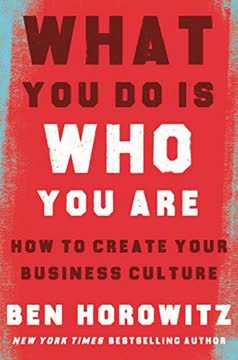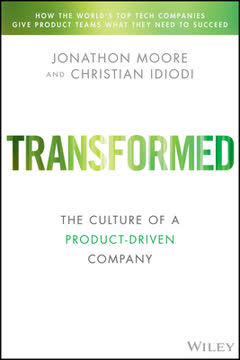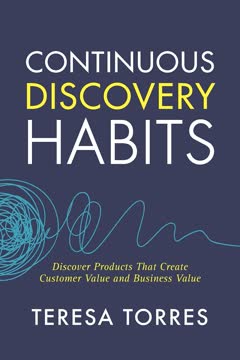Key Takeaways
1. OKRs drive focus and align teams towards ambitious goals
If everything is important, nothing is important.
Focused priorities. OKRs (Objectives and Key Results) help organizations focus on what truly matters by setting a single, top-priority Objective each quarter. This laser focus allows teams to align their efforts and make meaningful progress, rather than being pulled in many directions.
Ambitious goals. OKRs should be challenging "stretch goals" with only a 50-60% chance of success. This pushes teams to innovate and achieve more than they thought possible. Key Results should be measurable outcomes, not just tasks completed.
Organizational alignment. By cascading OKRs from company-level down to teams and individuals, everyone understands how their work contributes to overarching goals. Regular check-ins ensure teams stay on track and can course-correct as needed.
2. Set inspiring Objectives and measurable Key Results
Your Objective is a single sentence that is: Qualitative and Inspirational.
Inspiring Objectives. An effective Objective is qualitative, inspirational, and time-bound. It should motivate the team and provide a clear direction, such as "Own the direct-to-business coffee retail market in the South Bay."
Measurable Key Results. Key Results quantify success for the Objective. They answer, "How would we know if we met our Objective?" Typically, 3-5 Key Results are set, focusing on outcomes rather than tasks. For example:
- 40% of users come back twice in one week
- Recommendation score of 8
- 15% email newsletter open rate
Balanced metrics. Choose Key Results that balance different aspects of success, such as growth, engagement, revenue, performance, and quality. This prevents teams from optimizing for one metric at the expense of others.
3. Implement a weekly cadence of commitments and celebrations
When you are tired of saying it, people are starting to hear it.
Monday commitments. Start each week with a team meeting to review progress on OKRs and commit to key priorities. Use a simple four-square format:
- Intentions for the week (3-4 most important tasks)
- Forecast for the month
- Status toward OKRs (confidence levels)
- Health metrics
Friday celebrations. End the week by sharing wins and progress. This builds momentum, motivation, and cross-team learning. Have teams demo work-in-progress and share key accomplishments.
Constant communication. Regularly discussing OKRs keeps them top-of-mind for everyone. Leaders should weave OKR language into daily conversations, emails, and meetings to reinforce their importance.
4. Start small and adapt OKRs to your organization's needs
Keep it simple.
Pilot approach. Don't try to implement OKRs across the entire company at once. Start with a single high-performing team or department to learn and refine the process. Once successful, gradually expand adoption.
Simplify. Begin with just one company-wide OKR set. This helps teams focus and learn the process without overwhelming them. As comfort grows, you can add more nuanced approaches.
Adapt to your culture. Modify the OKR process to fit your organization's unique needs and culture. This might mean adjusting meeting cadences, reporting structures, or grading systems. The key is to maintain the core principles while making OKRs work for your specific context.
5. Use OKRs to drive learning and innovation, not micromanagement
OKRs are not for command and control. Do not use OKRs if you want to control people's activities.
Empower teams. OKRs should set clear outcomes, but allow teams flexibility in how to achieve them. This empowers creativity and innovation. Avoid using OKRs as a tool for micromanagement or dictating specific tasks.
Encourage experimentation. Frame OKRs as hypotheses to be tested. This mindset promotes a culture of experimentation and learning. When teams miss targets, focus on extracting valuable insights rather than punishment.
Cross-team learning. Use OKR check-ins and reviews as opportunities for knowledge sharing across the organization. Encourage teams to present learnings, successful strategies, and even failures to accelerate company-wide growth.
6. Balance OKRs with health metrics to protect core operations
Health Metrics act as the canary in the coal mine.
Core operations. While OKRs drive innovation and growth, it's crucial to maintain the health of existing business operations. Identify key health metrics to monitor alongside OKRs, such as:
- Customer satisfaction
- Team well-being
- Code quality
- Financial stability
Early warning system. Health metrics serve as an early warning system, alerting you if pursuit of ambitious OKRs is negatively impacting critical areas of the business. This allows for timely course corrections.
Promote balance. By tracking both OKRs and health metrics, organizations can pursue ambitious goals while ensuring long-term sustainability. This balanced approach prevents teams from sacrificing core operations in pursuit of short-term wins.
7. Grade OKRs to reflect on progress and adapt strategy
OKRs are about continuous improvement and learning cycles. They are not about making check marks in a list.
Regular grading. Score OKRs throughout the quarter, not just at the end. This provides ongoing visibility into progress and allows for mid-course corrections. A common approach is using a 0-1 scale, with 0.7-1.0 considered success for stretch goals.
Reflect and learn. The grading process is less about the final score and more about the conversations it sparks. Use grading sessions to reflect on what worked, what didn't, and why. Extract key learnings to inform future strategy and goal-setting.
Iterate and improve. Use insights from OKR grading to refine your goal-setting process. Adjust the ambition level, metrics chosen, or overall approach based on what you've learned. Remember that mastering OKRs is an ongoing journey of improvement.
8. Tailor OKR approaches for different stages of product development
OKRs are a very general tool that can be used by anyone in the organization, in any role, or even for use in your personal life.
Exploratory OKRs. For early-stage products or R&D efforts, use Exploratory OKRs to guide experimentation and market discovery. Focus on learning and validating hypotheses rather than hard targets.
Hypothesis OKRs. As you gain more market understanding, transition to Hypothesis OKRs. These test specific value propositions and help prove product-market fit. Key Results should reflect how the market would react if your hypothesis is correct.
Milestone OKRs. For longer-term projects or slower-moving industries, use Milestone OKRs to break big initiatives into measurable, outcome-based checkpoints. This maintains focus and allows for course correction on extended timelines.
9. Foster psychological safety for honest OKR discussions
There's no team without trust.
Build trust. Create an environment where team members feel safe to speak up, share concerns, and admit mistakes. This psychological safety is crucial for honest OKR discussions and learning from failures.
Separate from performance reviews. Make it clear that OKRs are not tied directly to individual performance evaluations. This reduces fear and encourages ambitious goal-setting and transparent progress reporting.
Encourage vulnerability. Leaders should model vulnerability by openly discussing their own struggles and learnings with OKRs. This sets the tone for the entire organization and promotes a culture of continuous improvement.
Last updated:
FAQ
What's "Radical Focus" about?
- Core Concept: "Radical Focus" by Christina Wodtke is about achieving significant goals using the Objectives and Key Results (OKRs) framework.
- Narrative Approach: The book uses a business fable to illustrate how a struggling startup can use OKRs to turn their business around.
- Practical Guidance: It provides practical advice on setting and achieving goals, focusing on outcomes rather than tasks.
- Empowerment and Culture: The book emphasizes the importance of a culture of empowerment and how OKRs can help foster this within teams.
Why should I read "Radical Focus"?
- Goal Achievement: It offers a proven framework for setting and achieving ambitious goals, which can be applied in both personal and professional contexts.
- Real-World Application: The book addresses common challenges and mistakes in implementing OKRs, providing solutions based on real-world experiences.
- Engaging Format: The use of a narrative makes complex concepts more relatable and easier to understand.
- Expert Insights: Christina Wodtke is a recognized thought leader in the field, bringing valuable insights from her experience with companies like LinkedIn and Zynga.
What are the key takeaways of "Radical Focus"?
- Focus on Outcomes: The book stresses the importance of focusing on outcomes rather than outputs or tasks.
- Iterative Learning: It highlights the need for continuous learning and iteration to improve goal-setting and achievement processes.
- Cultural Shift: Successful implementation of OKRs requires a shift towards a culture of empowerment and trust within teams.
- Cadence and Commitment: Regular check-ins and celebrations are crucial for maintaining focus and motivation towards achieving OKRs.
How does Christina Wodtke define OKRs in "Radical Focus"?
- Objective: A qualitative, inspirational goal that motivates the team and is time-bound.
- Key Results: Quantitative measures that indicate whether the objective has been achieved, typically three per objective.
- Outcome-Oriented: OKRs focus on the desired outcomes rather than the tasks or projects to achieve them.
- Iterative Process: OKRs are set, tracked, and graded regularly, allowing for adjustments and learning.
What is the "Executioner's Tale" in "Radical Focus"?
- Business Fable: The "Executioner's Tale" is a fictional story used to illustrate the practical application of OKRs in a startup setting.
- Character Journey: It follows Hanna and Jack, founders of a struggling tea startup, as they learn to implement OKRs to achieve their business goals.
- Challenges and Solutions: The story addresses common challenges in goal setting and execution, providing solutions through the characters' experiences.
- Engagement and Learning: The narrative format makes the concepts more engaging and memorable for readers.
How does "Radical Focus" suggest implementing OKRs for the first time?
- Start Small: Begin with a pilot team or a single OKR for the entire company to reduce complexity and risk.
- Focus on Learning: Use the initial cycles to learn and adjust the approach, rather than expecting immediate success.
- Simplify the Process: Avoid overcomplicating the process with too many OKRs or unnecessary software initially.
- Iterative Improvement: Continuously refine the OKR process based on feedback and results from each cycle.
What are the common mistakes in using OKRs according to "Radical Focus"?
- Task Focus: Mistaking tasks or projects for key results, which should be outcome-based.
- Lack of Iteration: Failing to iterate and learn from each OKR cycle, leading to repeated mistakes.
- Cultural Misalignment: Implementing OKRs without fostering a culture of empowerment and trust.
- Overcomplication: Setting too many OKRs or making the process too complex, which can overwhelm teams.
How does "Radical Focus" address the role of culture in OKR success?
- Empowerment Culture: OKRs thrive in a culture where teams are empowered to make decisions and take ownership of outcomes.
- Trust and Safety: Psychological safety and trust are essential for teams to experiment and learn from failures.
- Communication: Regular communication and reiteration of goals are crucial for maintaining focus and alignment.
- Leadership Role: Leaders must model and support the cultural shift towards empowerment and focus on outcomes.
What are the best quotes from "Radical Focus" and what do they mean?
- "Solve the problems you have, not the ones you imagine." This emphasizes focusing on real, present challenges rather than hypothetical or future issues.
- "When you are tired of saying it, people are starting to hear it." Highlights the importance of consistent communication and reinforcement of goals.
- "OKRs are all about mapping the actions we take now to the outcomes we want later." Stresses the connection between current efforts and future results.
- "Life is too short to start work on your dreams 'tomorrow,' for tomorrow never comes." Encourages immediate action towards achieving goals.
How does "Radical Focus" suggest balancing OKRs with other business operations?
- Health Metrics: Use health metrics to monitor ongoing operations and ensure they remain stable while pursuing OKRs.
- Prioritization: Clearly prioritize OKRs over routine tasks to ensure focus on strategic goals.
- Flexibility: Allow for adjustments in operations to support the achievement of OKRs without compromising essential business functions.
- Integration: Integrate OKRs into existing processes to align them with overall business objectives.
What is the role of the "cadence" in OKRs according to "Radical Focus"?
- Regular Check-Ins: Weekly check-ins help track progress and adjust efforts towards achieving OKRs.
- Commitment Meetings: Monday meetings set intentions and priorities for the week, aligning team efforts with OKRs.
- Celebration Rituals: Friday celebrations recognize achievements and maintain motivation and morale.
- Continuous Feedback: The cadence provides continuous feedback, enabling teams to learn and adapt quickly.
How does "Radical Focus" recommend using OKRs for product teams?
- Team-Level Focus: Product teams should focus their OKRs on business-related objectives that align with company goals.
- Cross-Functional Alignment: Ensure alignment across different functional areas within the product team to avoid conflicting priorities.
- Outcome-Based Objectives: Set objectives that drive meaningful business outcomes rather than departmental tasks.
- Iterative Learning: Use OKRs to foster a culture of continuous learning and improvement within product teams.
Review Summary
Radical Focus receives mixed reviews, with an average rating of 3.97 out of 5. Many readers appreciate the OKR framework presented but criticize the book's structure. Some find the storytelling approach engaging, while others consider it unnecessary. Positive reviews highlight the practical advice and actionable insights, particularly in the latter part of the book. Criticisms include redundant information, grammatical errors, and a lack of depth. Several reviewers suggest the content could be condensed into a shorter format. Overall, it's considered a good introduction to OKRs, especially for beginners.
Similar Books










Download PDF
Download EPUB
.epub digital book format is ideal for reading ebooks on phones, tablets, and e-readers.




